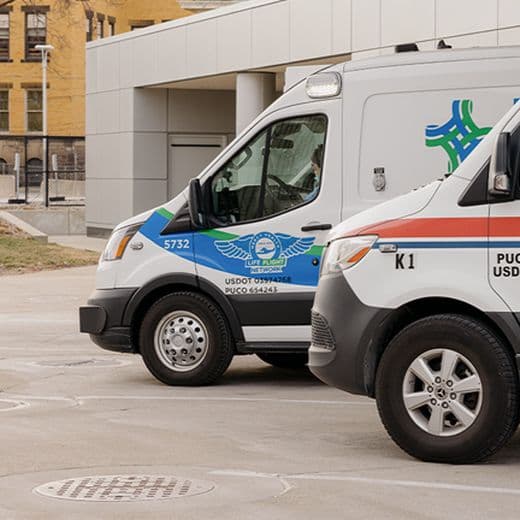Hanna Patterson |
In case you missed it: The following is a recap of the Guild webinar, “How to scale applied learning without breaking your workforce”, which is available on-demand here.
Learning by doing.
This principle, long at the heart of applied learning, is becoming more important as employers face tighter job markets and widening skills gaps.
Yet, in healthcare, success requires more than just sending learners into clinical rotations or apprenticeships. Employers are discovering there’s a recipe — a particular set of conditions and success factors — that determine whether, and how, applied learning works in practice. What may seem like a simple concept from the outside often depends on an organization’s culture, support systems, and workforce strategies.
During a recent webinar conversation, Levi Loverkamp, chief workforce planning officer at Bon Secours Mercy Health (BSMH), and Megan McInroy, director of corporate markets at Cengage Group, shared their perspectives on what makes applied learning succeed — and where it too often falls short.
Here’s what we heard, and what it could be for the future of talent strategy in healthcare.
Success factor 1: Support ecosystems
Five to seven years ago, applied learning in healthcare was largely a “figure-it-out-yourself” exercise. Employees seeking clinical experiences often had to coordinate directly with their schools and local clinical leaders, with little structured support from the employer. Today, that has changed. Many organizations are building ecosystems of applied learning support, with internal mobility teams working hand in hand with clinical educators to secure placements and guide employees through the process.
As Loverkamp has learned, the first success factor of applied learning is ensuring that learners aren’t “left on an island” — but supported with dedicated coaches, clear career pathways, flexible schedules, technology, and partnerships that align educational requirements with workplace realities, even if state and federal regulations lag behind.
Without these systems of support, he warned, learners may still start a learning journey, but too few will finish.
“Learners have a lot on their plates. A lot of times they’re working full time,” added McInroy. “We need to create learning solutions that they can do, conveniently and flexibly, that are going to work for them.”
Success factor 2: Preceptors
Preceptors — experienced clinicians who serve as a teacher, mentor, and guide for less experienced learners — are another lynchpin of applied learning. In many organizations, however, they are treated as an add-on rather than as core to the workforce strategy. Recognizing their value means shifting how organizations think about precepting.
As a first step, McKinroy advised making the business case to healthcare executives about compensating preceptors.
“[Preceptors] are helping to develop that next class of talent that's really going to help them get the extra pair of hands they want,” McInroy said. “Understanding the message and the whole reasoning behind all of this is so important.”
However, for applied learning to really work, employers need to also redefine precepting as mission-critical work, McKinroy and Loverkamp stressed. HR leaders should consider financial incentives, performance recognition, career-mobility opportunities, and technology investments to ease the load. When preceptors are resourced and supported, they become talent multipliers, accelerating the readiness of new employees and strengthening the culture of learning inside the organization.
Loverkamp, for his part, said BSMH is looking at any and all options to free up workers’ capacity for precepting. “Some of the highest value work next to direct delivery of care is teaching the folks that are going to come work alongside them,” he said.
Success factor 3: Cohorts
To maximize the impact of applied learning, Bon Secours Mercy Health and Cengage Group have also experimented with more structured, cohort-based approaches. In practice, that has meant designating a set time each month or quarter when groups of learners come into a facility and progress through clinical experiences collectively as a unit. It’s also included placing learners into “float pool” models, rotating them across different departments to provide broad exposure and accelerate progression toward licensure. Regardless, the benefit is twofold: Learners gain a wider range of experience more quickly, and HR leaders know these groups are entering with a common baseline of didactic preparation.
Loverkamp shared that cohorts have actually helped Bon Secours Mercy Health achieve higher program completions and acceptance rates into new roles. More broadly, cohort-based models have helped BSMH create more belonging and accountability among employees while reducing attrition and affording business leaders a clearer view of talent-readiness.
One lesson both Loverkamp and McInroy learned is the importance of being deliberate about cohort design. Cohorts are powerful, but so is tailoring program flow to the realities of the workplace.
“You have to see what works and then iterate and be very conscious of how everybody is progressing through those particular cohorts. And then if that doesn’t work, adapt and move to the next thing,” she said. “Because a one-size-fits-all approach doesn't work.”
The secret recipe
Together, these factors illustrate why applied learning is not a plug-and-play solution. It functions as a system, and systems require design. Support ecosystems provide the scaffolding learners need, preceptors serve as multipliers of talent, and cohorts create the structure and predictability that sustain progress.
When these elements come together, applied learning moves beyond good intentions. It becomes a workforce strategy that produces measurable results for learners and employers alike.



